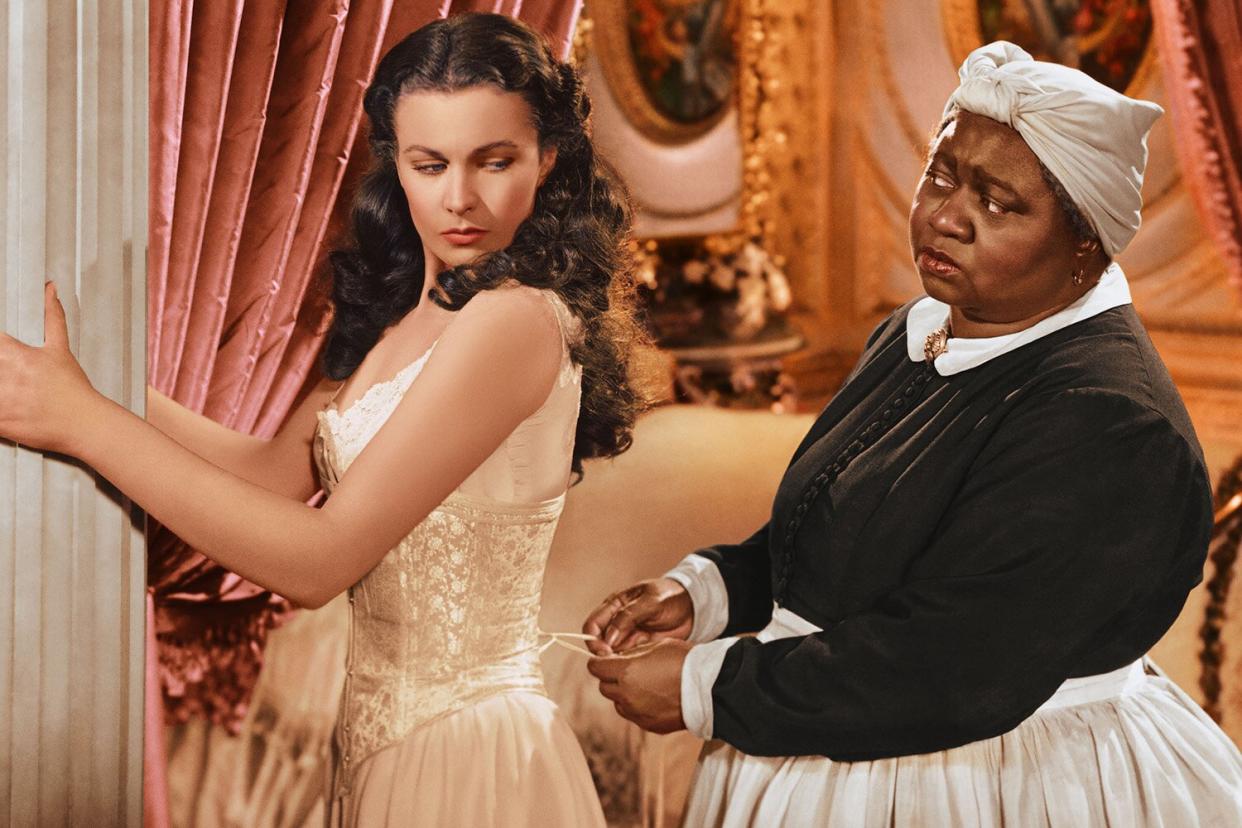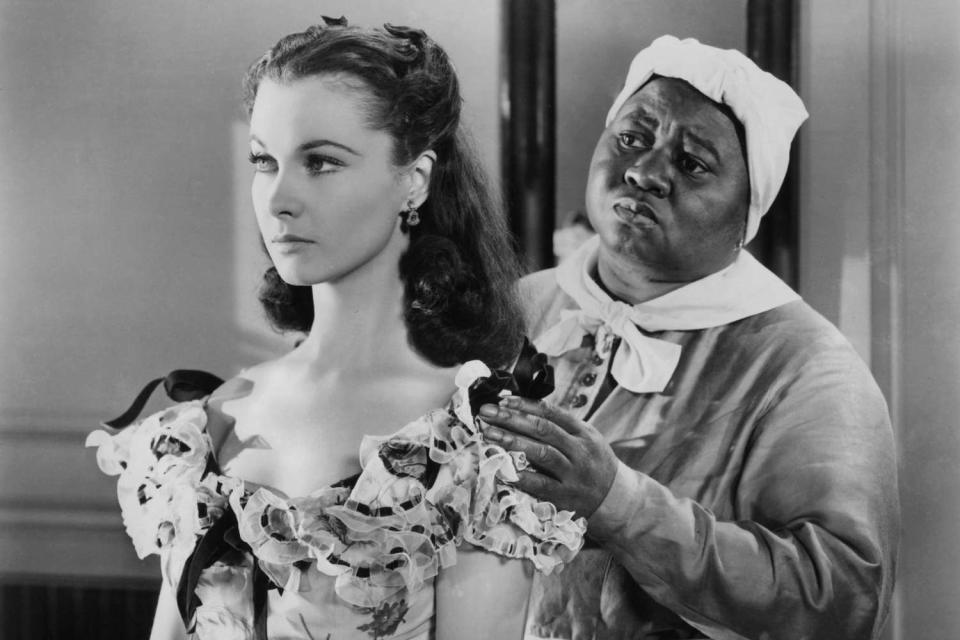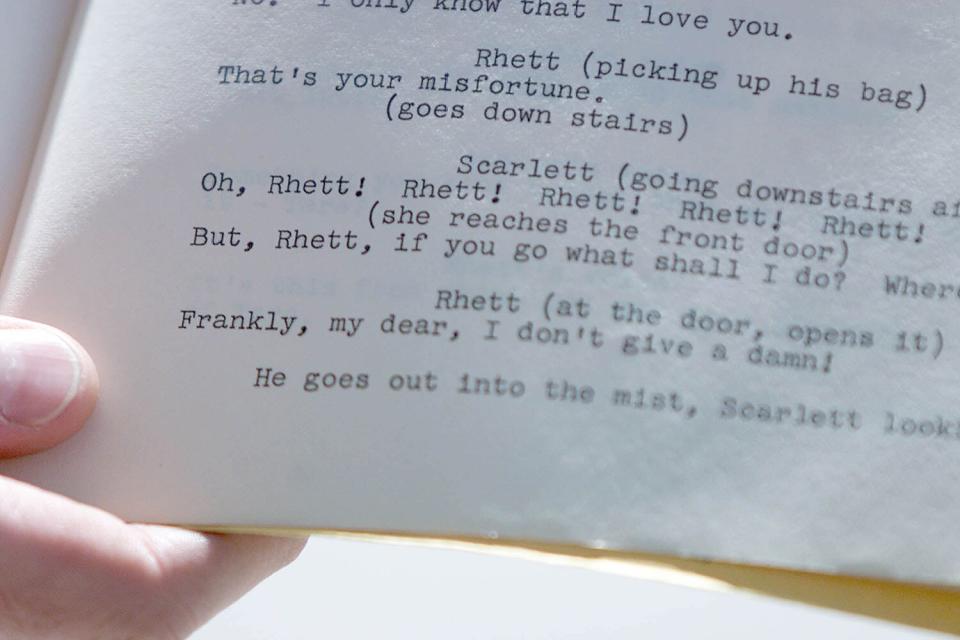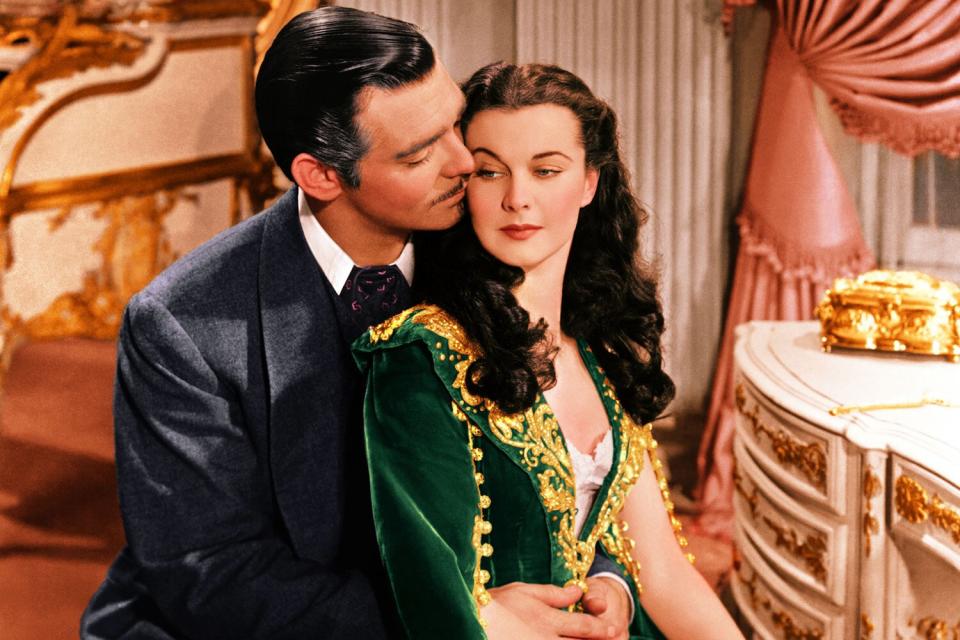Original Gone with the Wind Script Reveals Behind-the-Scenes 'War' Over Depiction of Slavery

- Oops!Something went wrong.Please try again later.
- Oops!Something went wrong.Please try again later.
Silver Screen Collection/Getty Images Vivien Leigh (left) and Hattie McDaniel (right) appear in Gone with the Wind
Gone with the Wind — the 1939 film often criticized for its portrayal of slavery and race — was met with a "war" during production over said depiction, according to a new essay.
Historian David Vincent Kimel, who purchased a 301-page shooting script that once belonged to casting director Fred Schuessler, wrote for The Ankler that several "lost" scenes were cut from the final film.
Adapted from Margaret Mitchell's 1936 novel, the film's shooting script shows that "rival groups of screenwriters on the script emerged: 'Romantics' and 'Realists' who amped up scenes of mistreatment to highlight the brutality of Scarlett's character and even condemn the institution of slavery itself," per Kimel.
The historian purchased the script in 2020 for $15,000 — and estimates that less than half a dozen exist.
RELATED: Mickey Kuhn, Child Actor in 'Gone with the Wind', Dead at 90

Metro-Goldwyn-Mayer/Getty
While HBO Max now notes in a disclaimer that the movie "denies the horrors of slavery, as well as its legacies of racial inequality," some writers pushed for a more truthful depiction of race relations at the time before revisions, per the script.
"I discovered that Schuessler's Rainbow Script was a mosaic that actually represented the perspectives of numerous screenwriters," Kimel wrote in his essay. "Much of the excised material was a harsh portrayal of the mistreatment of the enslaved workers on [character] Scarlett's plantation, including references to beatings, threats to throw 'Mammy' out of the plantation for not working hard enough, and other depictions of physical and emotional violence."
Producer David O. Selznick hired more than a dozen screenwriters for the film and, when the film was complete, ordered all copies of shooting scripts to be destroyed, Kimel noted.
Some writers, including F. Scott Fitzgerald, who was eventually fired, pushed for the film to show the "romance of the old South," according to a letter. Selznick also wanted specifically Black actors to use the n-word in the film, according to a letter to publicist Val Lewton, which is mentioned in Kimel's essay, but the slur did not make the film.
"Selznick's struggles over the exclusion of the KKK and the n-word from the script and his negotiations with the NAACP and his Black cast are the stuff of legend. But the producer's decision to entertain scenes showcasing the horrors of slavery before deciding to cut them has never been told (in addition to scenes of Rhett Butler's suicidal ideation with a gun, and even a cross-dressing rioter)," Kimel wrote.
"If not for Selznick's choices to err on the side of white pacification, he could have altered the course of one of the most celebrated — and disgraced — movies ever made," he added.
RELATED: Queen Latifah Says 'Let Gone with the Wind Be Gone with the Wind' from HBO Max

LUCY NICHOLSON/AFP via Getty Images The original shooting script for Gone with the Wind
Screenwriters Sidney Howard and Oliver H.P. Garrett, on the other hand, were on what Kimel called the "Realists" side of things. As the historian notes, "their material depicting race relations was so often so gritty and uncompromising that some of it was cut in drafts even before the creation of the script in my possession."
One scene cut from the script included character Scarlett (played by Vivien Leigh) hitting house slave Prissy (played by Butterfly McQueen) with a rod — as she "deliberately raises her switch and brings it down upon Prissy's back." Scarlett also swears at Mammy in an unused moment from the script, after she "expresses regret over having to engage in hard labor."
Other scenes cut from the film extended beyond race, such as a scene where character Rhett Butler (played by Clark Gable) contemplates suicide.

Silver Screen Collection/Getty Images A scene from 1939's 'Gone with the Wind'
Never miss a story — sign up for PEOPLE's free daily newsletter to stay up-to-date on the best of what PEOPLE has to offer, from juicy celebrity news to compelling human interest stories.
"Were the deletions of harsh scenes of slavery simply in line with these other edits? Or did Selznick lean into material sugarcoating slavery and edit out many of the harshest scenes under pressure to make the protagonists sympathetic to white audiences, especially in the South? Regardless of his motive, as a result of his decision, from a modern perspective still struggling with the idealization of the antebellum world, the producer created a kind of cinematic Confederate monument whose critical reputation was increasingly called into question," Kimel said at the end of his essay.
"It is a classic with an asterisk, a work that is separate and not exactly equal in the eyes of many commentators, to take an apt metaphor from the work of scholar Claudia Roth Pierpont," he added.
In June 2020, HBO Max confirmed that Gone with the Wind would be removed from its catalog, but promised that it would return with a "discussion of its historical context and a denouncement" of its portrayal of Black people and slavery.
An HBO Max spokesperson told PEOPLE at the time that the film is "a product of its time and depicts some of the ethnic and racial prejudices that have, unfortunately, been commonplace in American society."

